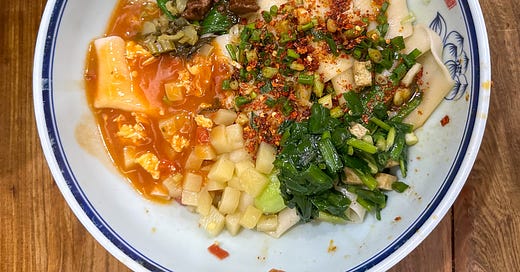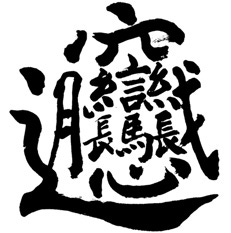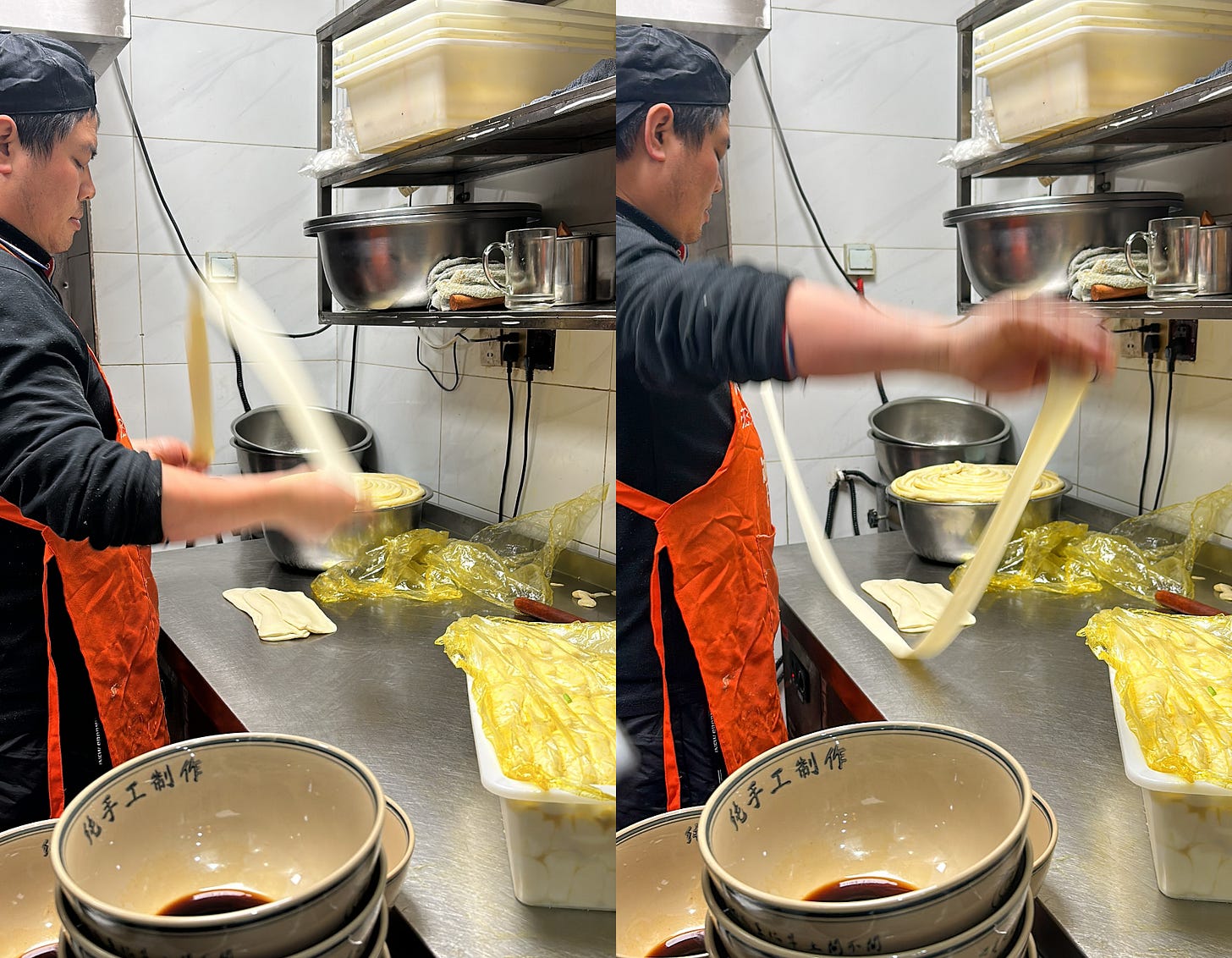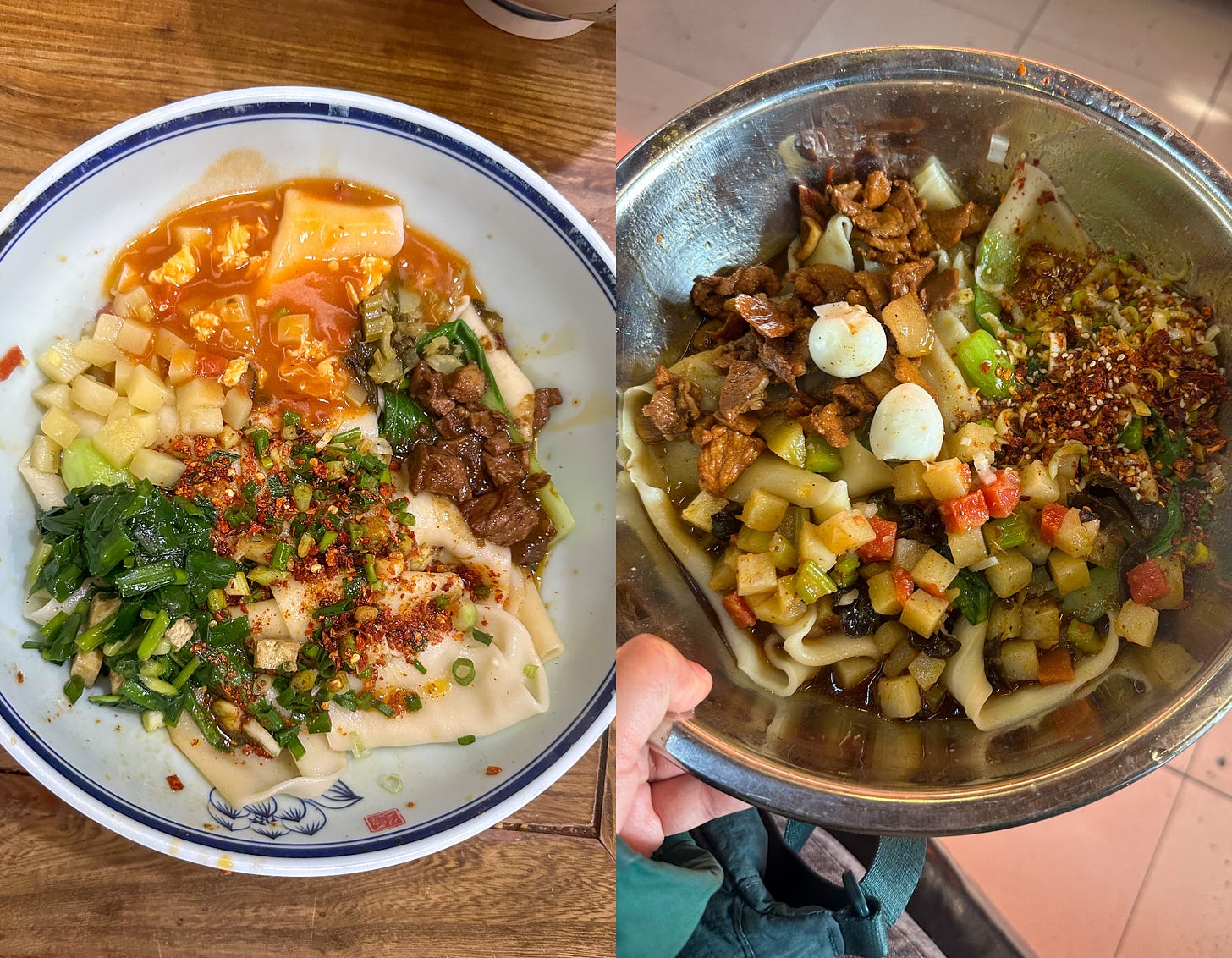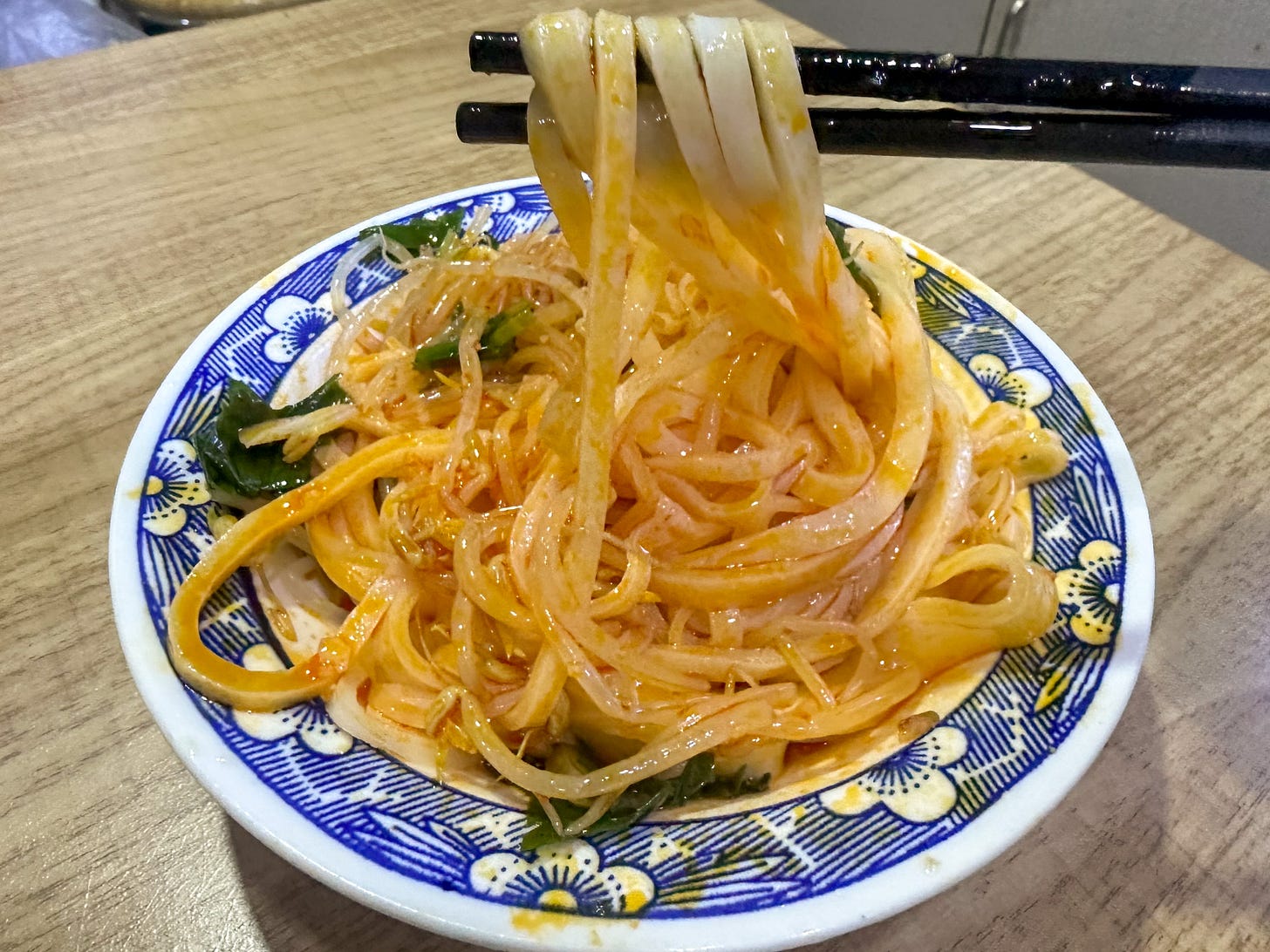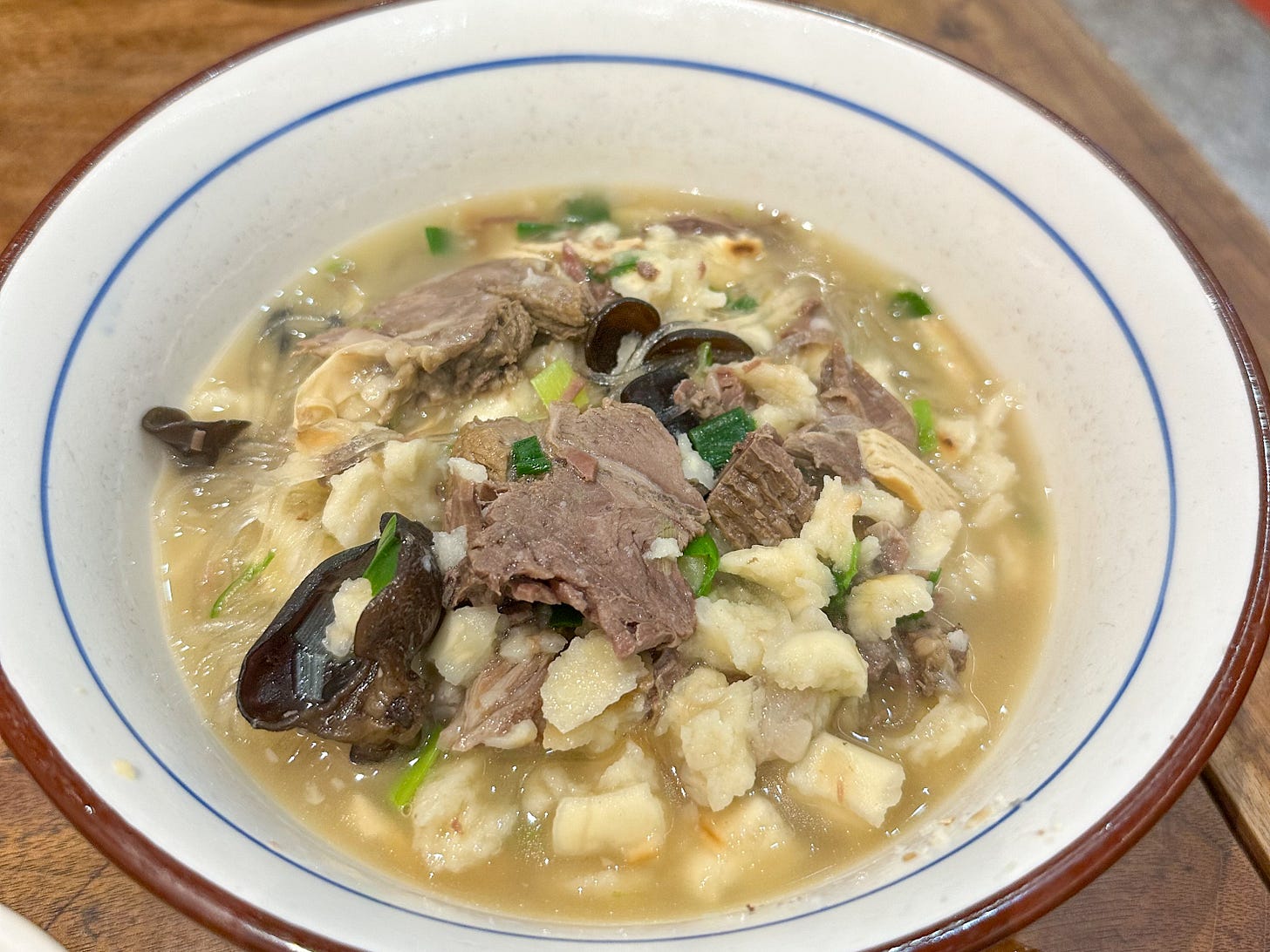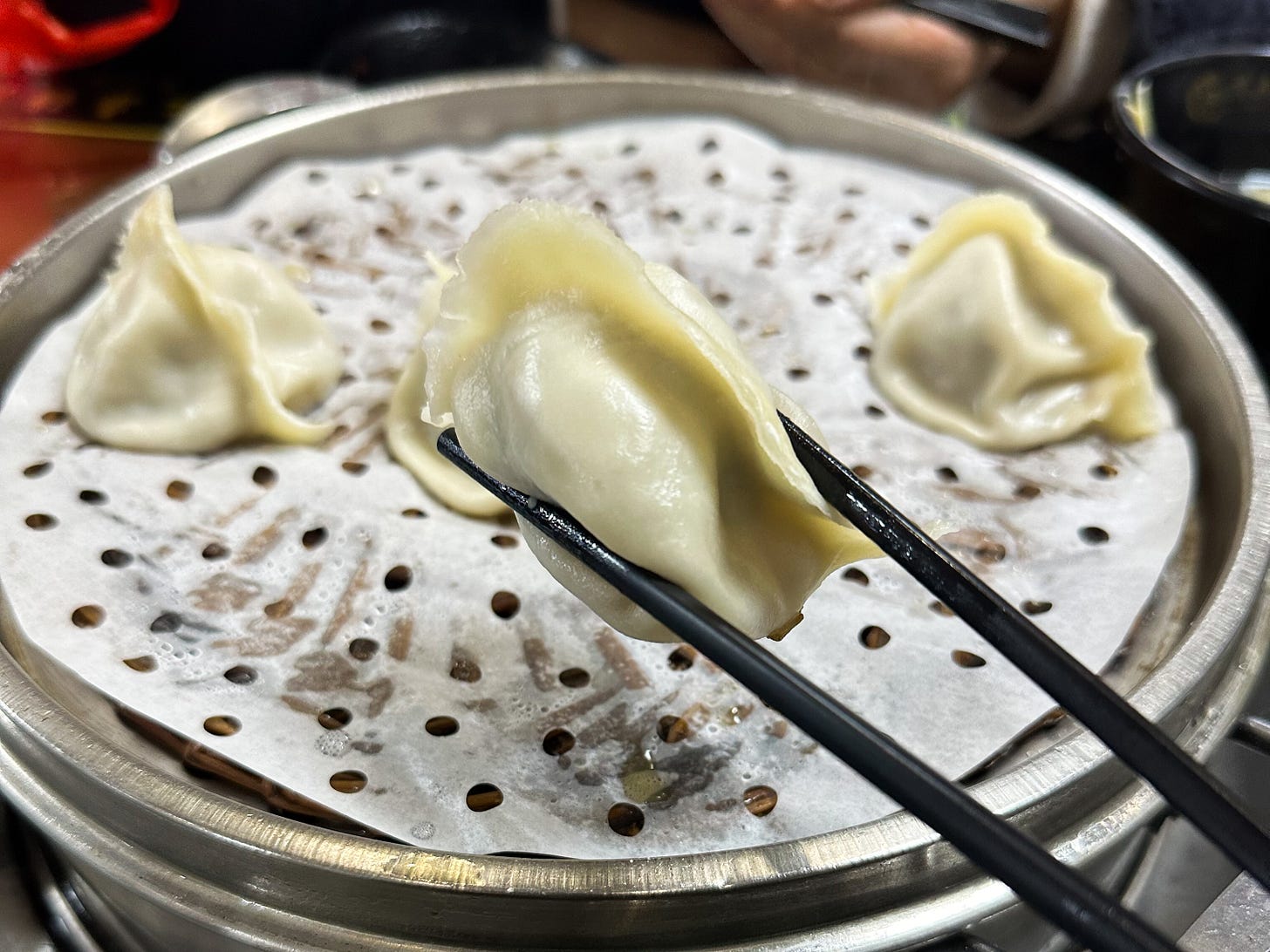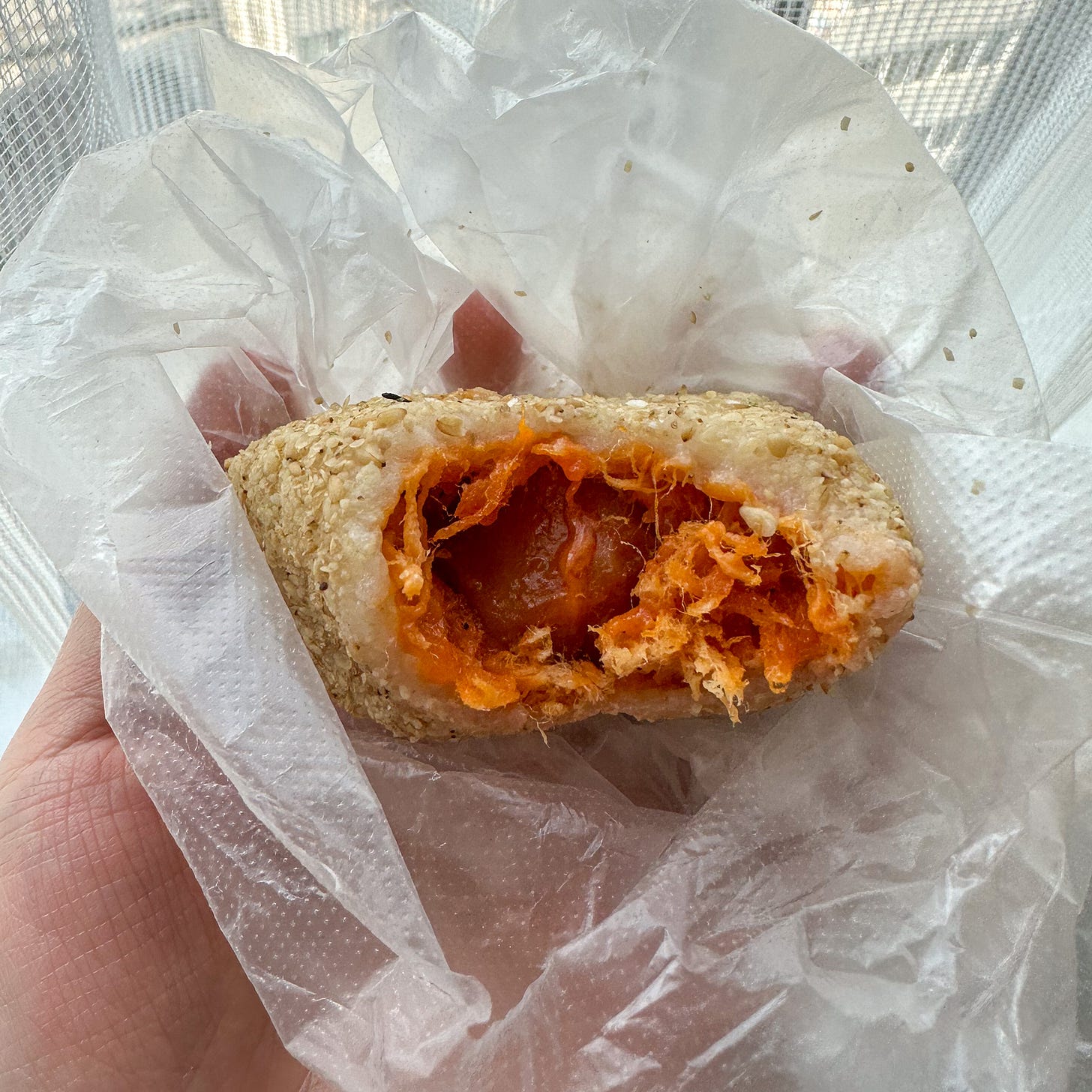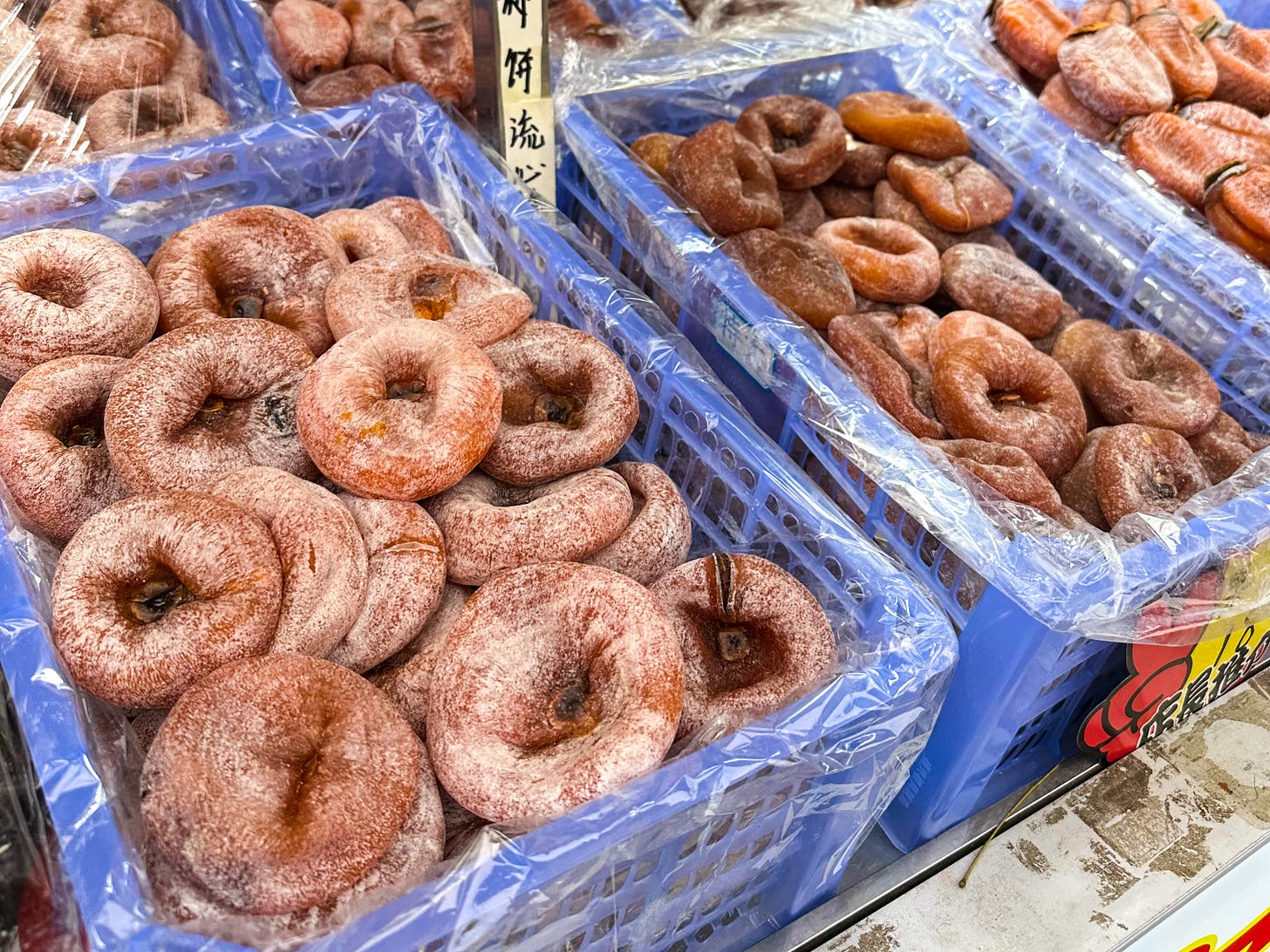In the past two years, the rapid emergence and success of hand-pulled noodle eateries in Berlin always reminds me of the Chinese saying "sprouting like bamboo shoots after a spring rain." When planning a trip near Sichuan accessible by train, I couldn't miss the opportunity to visit Xi’an, the birthplace for these noodles.
My first visit to Xi’an was in 2007, when my mom took me and a friend, two eighth-graders on a night train with seats only, to see terracotta warriors, imperial palaces, and Yellow River’s waterfall. We dined at Huiminjie, a street in the Muslim quarter, nowadays deemed too touristy by locals. Though back then, my teenage self probably found everything more interesting than the taste itself.
Now the city has become a trendy weekend travel destination for its food and history, just 4 hours by train from Chengdu. Despite being the capital of 13 dynasties with a rich banquet tradition, Xi’an is more known for its carb-heavy street food such as noodles, bread, and lamb dishes under the influence of Hui Muslim Chinese. That’s what I’m here for.
Watch me eat through Xi’an here!
Hand-pulled noodles
Of the vast array of noodles available in Xi'an, none captivate quite like biang biang noodles (Biang Biang mian). These thick ribbon noodles, also known as belt noodles, are prepared to order. Piles of dough pieces rest in oil, and the chef skillfully stretches and slaps the dough on the table with a “biang" sound, which also gives the dish its name. Biáng, the most complex made-up Chinese character, does not exist in the dictionary or on the keyboard. The word was probably invented as a marketing strategy, I believed when I was 13.
I still ordered it. Pulled noodles are briefly cooked and served dry with toppings. Each eatery has its unique combo – one with tomato and egg, Chinese chives; another with quail eggs. The essential part is to top it with chili flakes, then drizzle it with a spoonful of hot oil. Although a portion consists of only three strips, they are quite filling.
The noodles are perfectly done in textures, chewy and elastic, and additions from the toppings make them even more enjoyable. The hot oil blends the seasoning into a mild spicy and vinegary flavor, without being too overpowering. You could also go minimalistic and order your po mian, which is a bowl of thinner hand-pulled noodles with only hot chili oil and some veggies.
In Xi’an, cold steamed noodles made from grain and starch are popular as well. The former, mi pi (米皮), noodles made from steamed rice batter tossed in chili oil. These have a softer and less slippery texture than liang pi, made from washed wheat starch. Both would be great snacks on a hot summer day. The key to these noodles is the dark red and aromatic chili oil made from Shaanxi-grown chilis.
Flatbreads, two ways
Besides noodles, mo (馍), a versatile flatbread, plays a significant role in local cuisine, serving as the base for both rou jia mo and yang rou pan mo. Made from wheat flour, this palm-sized disc is slightly crispy on the outside, and fluffy and soft on the inside.
Rou jia mo (肉夹馍), often called Chinese burger (not quite close), is a flatbread stuffed with braised pork or beef (the Muslim version), one of my favorite Chinese street foods. The place was recommended by our tuk-tuk driver, who also tipped us at one of the noodle eateries, "You will never want to eat another rou jia mo elsewhere".
The pork meat with both the lean and fat part and a dash of broth was chopped together and tucked in the mo. The fat part makes the filling juicy and moist. The flavors were deeply steeped in the meat pieces after a long braising, contrasted by a simple good mo. While enjoyed hot, it’s indeed the best rou jia mo I’ve ever had. The locals like to enjoy it with a bowl of liang pi and a bottle of chilled Bing Feng, a soda drink similar to Fanta only available in Shaanxi.
In the night market, we came across a vegetarian version of rou jia mo, which is filled with salted egg yolk, fried egg, and pickles — flavor but slightly salty and dry compared to the original.
Yangrou paomo (羊肉泡馍), lamb soup with shredded bread, is another iconic Xi’an dish, with less international acknowledgment.
Eating it authentically involves tearing the whole bread into bite-sized pieces by hand. A fun but challenging task takes about 5-10 minutes (or awkwardly ask the waitress to help but prepare to be judged). Once the hard work is done, the bowl is sent back to the kitchen to cook with lamb slices, glass noodles, and wood ear mushrooms. The torn pieces are then sent back to the kitchen to cook with lamb slices, glass noodles, and wood ear mushrooms. The resulting lamb soup is umami and soothing for a chilly winter day. The bread pieces are firm but not dry, absorbing the soup while retaining a satisfying bite.
Xi'an’s morning market
Seeking a taste of the local market and breakfast vibes, my mom took me to a morning market near the ancient city wall. Despite the freezing -8 degrees at 8 am, the street was alive with vendors selling vegetables and hawkers bustling at breakfast stands.
One vendor showcased jing gao (甑糕), a steamed sticky rice dessert layered with a thick paste of red beans, Chinese dates, and sweet dates, The dried fruits are soft and blend into the rice, giving it a nice brown hue and natural sweetness. I chose a steamed veggie roll (cai Juan, 菜卷) filled with Chinese chives, glass noodles, and eggs, dressed in spiced soy sauce and chili oil. My mom opted for a toasted rice porridge with fried twisted dough, a popular breakfast choice in Sichuan.
Other highlights
Steamed soup dumplings:
Different from the delicate Shanghai-style soup dumplings, the Xi’an version is bigger and more robust, with a beef and leek filling. It’s juicy, tender, and strong on spices, especially the pepper taste. There’s an instruction on the table: "Pick up lightly, open a window, drink the soup, and dip in the sauce". Not as interesting as the other dishes I had in Xi’an, but who says no to dumplings?
Rose sticky rice dessert:
Desserts are mostly low on priority when I hunt food in China. However, near the soup dumplings, we found a shop specialized in sticky rice balls (ci gao, 糍糕) in a variety of flavors. We got the classic sesame and walnut filling and the other one with pork floss and salted egg yolk. The dough is infused with a rose scent and tossed in a layer of soy meal later proves to be a delight.
We also visited a small museum hosted in the famous Xi’an restaurant, showcasing the history of Shaanxi food and local produce, such as Dahongpao Sichuan peppercorns from Hancheng (yes they’re not only grown in Sichaun); long thin chili peppers from; dried persimmons (shibing) from Fuping and quality lamb from northern Shaanxi.
Compared to ordering big, delicate banquet dishes, we escaped to the warmth of barbecued lamb skewers for the last meal. We ended up in a chain store near the hotel as it was impossible to wait outside of a more authentic place at the temperature of -8ºC. The skewers were decent, but nothing too special than all the skewers I have in other parts of China. But I’d say, till next time, Xi’an!
List of places
Biang Biang noodles:
郭老三面庄 (this one with best chewy noodles)
爱骅裤带面(this one with amazing chili oil)
Mi pi: 胖嫂秦镇米皮
Rou jia mo: 秦豫肉夹馍
Yangrou pao mo: 一真楼羊肉泡馍
Market: 东仓门早市
Sticky rice dessert: 马继光玫瑰糍糕

